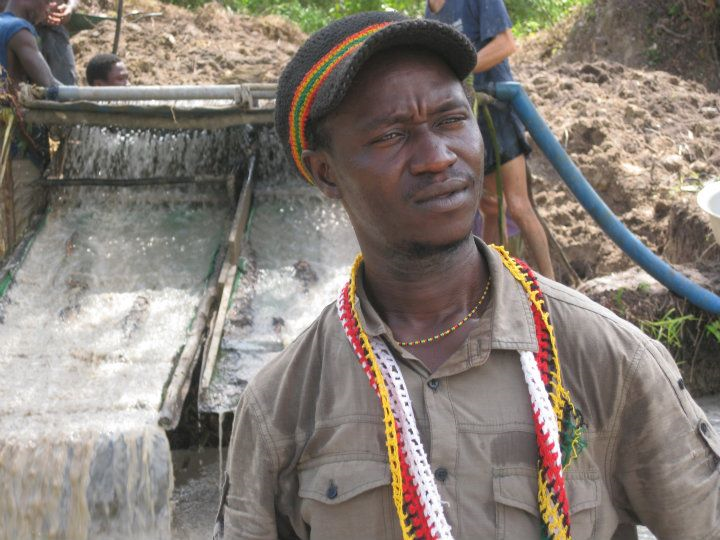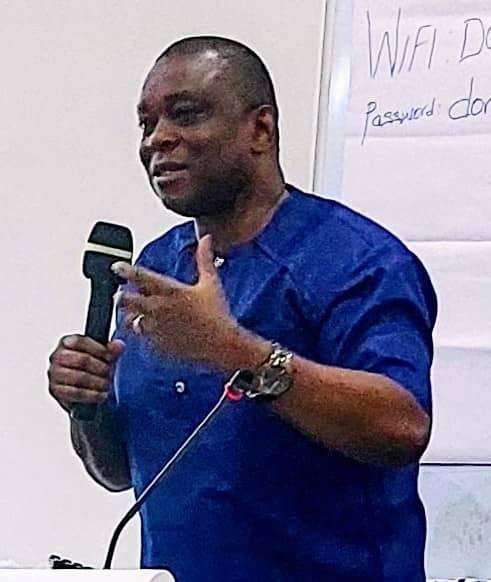Sierra Leone’s listing as third country most prone to the effects of global warming
Sierra Leone, a non-industrial nation, ranks among three countries in the world deemed utterly prone to the harsh effects of global warming. (Photo: Theophilus Sahr Gbenda, author)
This rating was done by the Global Environmental Facility (GEF) set up to help tackle the planet’s most pressing environment problems and drawing the attention of state authorities to the effects of global warming and the contributing human factors responsible.
When the rating for Sierra Leone was announced, questions were asked as to what yardstick was used to arrive at that conclusion. Accordingly, countries were rated by virtue of their abilities to respond swiftly and effectively to environmental disasters.
The Ebola outbreak of 2014, the Kroo Bay flooding of September 2015 and the 14th August 2017 Regent mudslide/flooding and the ensuing loss of hundreds of human lives and millions of dollars’ worth of properties, lend credence to the fact that the disaster prone rating of the country speaks to the reality of the situation on the ground.
In all three unprecedented disasters, local authorities responsible for disaster management confessed that they were “caught pants down”. For instance, Sierra Leone which was the last country to be affected by the Ebola outbreak among the three Mano River Union countries by the bio-weapon onslaught, became the worst affected with far more deaths compared to Guinea and Liberia.
As the global warming threats intensify, it is becoming crystal clear that Sierra Leone is at great risk of impending dangers if steps are not immediately taken to robustly respond to potential disasters.
While in other countries environmental threats are hinged mainly on industrialization, Sierra Leone’s situation is blamed entirely on human factors and natural changes in the seasonal behaviour of the global environment.
Factors such as deforestation, rural to urban migration and the ensuing quest for housing, industrial farming, irresponsible mining and reckless timber logging, irregular disposal of garbage in drainages and strategic waterways among others, continue to pose real threats to the environment and by the look of things, there seems to be no end in sight.
Mining for instance, according to recent findings, has been more about environmental destruction than development. Mined out pits are not reclaimed in accordance with law, thereby serving perpetually as perfect breeding grounds for malaria and other waterborne diseases. Over the years, a number of people, especially children, have drowned in those mined out pits that have now become artificial lakes. Many communities have suffered devastation since mining started in the 1030s.
Apart from the scores of unattended mined out pits across mining communities, there are other underlying factors having direct effects on the environment. Factors such as water and air pollution due to chemical application and the uncontrolled infestation of plastic substances in our land and seas, all have grave effects on the environment.
Over the past years, unregulated sand mining has created more harm than good, resulting in the alteration of natural landscapes, wiping off of permanent structures and gravesides, seasonal flooding and other associated disasters.
One practical action taken thus far to mitigate the effects of global warming is the establishment of the Environmental Protection Agency and the National Protected Area Authority (NPAA). So far, these two entities are contending with capacity issues and have therefore not given any hopes of a brighter future in handling issues bordering around the environment and the associated dangers.
There is also the Meteorological Department charged with forecasting weather conditions and giving early warning signals to the rest of the population, but so far this department is yet to prove its usefulness. The department struggles with very low annual budgetary allocation and lacks the needed tools to enhance its effectiveness.
Government has a key responsibility in ensuring that human activities that have stood out to be inimical to the environment are effectively controlled. For instance, people build dwelling houses in disaster prone areas. As a result, forest covers have been seriously depleted and mountainous areas taken over by houses. The Regent mudslide and flash floods are blamed directly on the human invasion of the Sugarloaf Mountain.
Also adversely affected is the country’s maritime potential. This month of April is observed as a ‘closed period’ as declared by the Government of Sierra Leone.
This came after it became clear that the country’s fish stock has drastically declined and that a closed period is necessary for restocking. The two key factors blamed for this relate to over-fishing mostly by illegal foreign fishing vessels and the direct effect of global warming.
Amidst all these, less attention is being paid to riverine communities most of which have over the years experienced gradual but irreversible shrinking.
It goes without saying that should this trend continue over the next five to ten years, many island communities will varnish, with lives at great risk.
Madam Haddiatu Jallow, former Chairperson of EPA, reacting to the country’s rating by the GEF, said “Presently, the country is suffering from the impact of these changes, (the flooding in Makeni, Bo-Kenema highway and Freetown), the change in the pattern of the rainfall has terribly impact on our farming communities and this has resulted in the reduction of crop yields, the loss of properties and further putting addition stress on our food security and livelihood programmes”.
So far, the country, despite such a delicate rating, seems to be doing practically nothing to try to match up with the gross environmental challenges which if treated with a wave of the hand will only leave the entire populace at the absolute mercy of nature.
Jah save us.
By Theophilus Sahr Gbenda
Stay with Sierra Express Media, for your trusted place in news!
© 2019, https:. All rights reserved.






